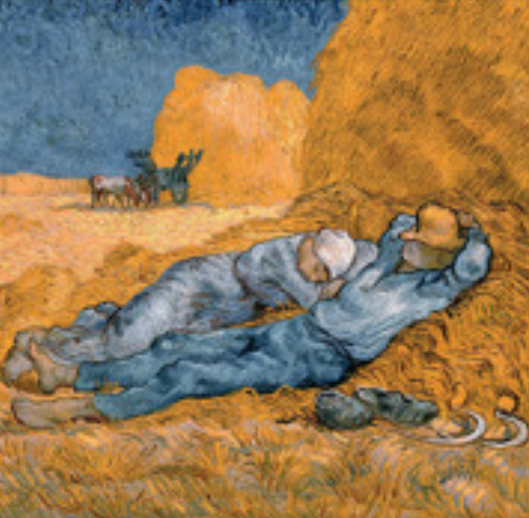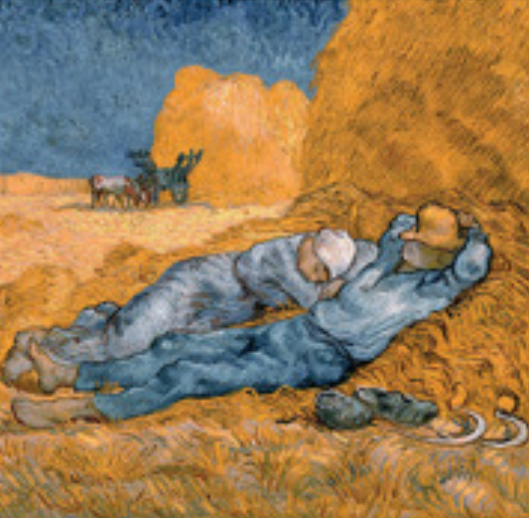Site editor:
Joaquim Cardoso MSc
Health Institute — for continuous health transformation
October 2, 2022
The Lancet
Editorial
SEPTEMBER 24, 2022
For decades, sleep and its associated disorders have been considered a Cinderella branch of medicine.
The subject receives little attention in undergraduate education, training is an adjunct to other more established specialties, and funding for sleep research is woefully deficient.
The reasons for such neglect are embedded in the disparate nature of the conditions grouped together under the heading of sleep disorders-ranging from sleep apnoea, dealt with by an ear, nose, and throat specialist or cardiologist, to restless legs syndrome, handled by a neurologist or primary care physician-as well as a lack of understanding of their causes and the sparsity of treatment options.
However, things are beginning to change.
Partly responsible for this shift were three scientists who won the Nobel Prize for Medicine or Physiology in 2017 for their work on the genetic basis of circadian rhythms.
Thanks to the discoveries of Michael Rosbash, Jeffrey Hall, and Michael Young, we now know that humans have a molecular clock — a network of timekeeping genes and associated proteins that are transcribed, translated, and degraded in a daily cycle.
These genes have also been found to be associated with bipolar disorder, depression, and other mood disorders.
Some sleep disorders have been discovered to be markers of Parkinson’s disease, Lewy body dementia, and multiple system atrophy.
Additionally, the development of portable monitoring devices has enabled practitioners to assess sleep in real-world environments including the home.
Finally, the elucidation of the pathophysiology of narcolepsy — caused by the selective loss of neurons that secrete the wake-promoting neuropeptide orexin — has led to the development of novel drugs for insomnia.

Building on this progress, The Lancet and The Lancet Neurology today publish a four-paper Series that systematically examines various sleep disorders, as well as reviewing the anthropology of sleep.
Despite the diverse nature of sleep disorders, the Series delivers four key messages.
- UNDERAPPRECICATION: First, sleep disorders are an underappreciated public health problem.
- TREATMENTS: Second, patients are being failed by the lack of effective treatment options.
- PHYSICIANS AWARENESS: Third, in both hospital and primary care settings, physicians need to be aware of the chronic effects of poor sleep on general medical conditions such as hypertension, diabetes, and heart disease.
- ON THE RISE: Finally, rates of insufficient sleep and sleep disorders are highly likely to rise.
First, sleep disorders are an underappreciated public health problem.
They are very common, cause much distress to both sufferers and their bed partners, and have far-reaching effects on population health and economic wellbeing.
For example, insomnia occurs in up to a third of adults.
Excessive daytime sleepiness can reduce productivity and safety in the workplace.
In the classroom, children’s education suffers, and on the roads, up to a third of traffic accidents are caused by sleep deprivation.
insomnia occurs in up to a third of adults. In the classroom, children’s education suffers, and on the roads, up to a third of traffic accidents are caused by sleep deprivation.
Second, patients are being failed by the lack of effective treatment options.
Drug treatments are easily prescribed for insomnia, for instance — most notably benzodiazepines and the so-called Z-drugs, such as zopiclone, eszopiclone, and zaleplon; however, non-pharmacological approaches, such as those based on cognitive behavioural therapy, are considered first-line treatment but are often not widely available.
Furthermore, use of talking therapy does not risk the development of medication dependence, which is common with long term use of drugs prescribed for sleep disorders.
Sleep hygiene, which has increasingly gained the attention of the public, can be a key part of such cognitive behavioural therapies.
Drug treatments are easily prescribed for insomnia, … however, non-pharmacological approaches, such as those based on cognitive behavioural therapy, are considered first-line treatment but are often not widely available.
Sleep hygiene, which has increasingly gained the attention of the public, can be a key part of such cognitive behavioural therapies.
Third, in both hospital and primary care settings, physicians need to be aware of the chronic effects of poor sleep on general medical conditions such as hypertension, diabetes, and heart disease.
Both insufficient and excessive sleep will have substantial detrimental effects on many common health conditions, increasing both morbidity and mortality.
Enquiry about sleep should therefore be an integral part of any medical consultation.
Enquiry about sleep should therefore be an integral part of any medical consultation.
Finally, rates of insufficient sleep and sleep disorders are highly likely to rise.
For example, anthropological investigation has shown that insomnia is inextricably linked with modern life (insomnia occurs in 10–30% of people living in industrialised societies compared with less than 2% in hunter-gatherer populations in Namibia and Bolivia).
Psychosocial stressors, alcohol consumption, smoking, and lack of exercise are associated with sleep disturbance.
For example, anthropological investigation has shown that insomnia is inextricably linked with modern life (insomnia occurs in 10–30% of people living in industrialised societies compared with less than 2% in hunter-gatherer populations in Namibia and Bolivia).
Psychosocial stressors, alcohol consumption, smoking, and lack of exercise are associated with sleep disturbance.
Additionally, increased use of technological devices — particularly smart phones among younger people — in the bedroom around the time of sleep leading to exposure to blue light, is considered a potential cause of sleep–wake rhythm disorders.
Additionally, increased use of technological devices — particularly smart phones among younger people — in the bedroom around the time of sleep leading to exposure to blue light, is considered a potential cause of sleep–wake rhythm disorders.

For an activity that takes up a third of every human being’s life, sleep has received, hitherto, much less attention than it deserves by physicians, health-care professionals, and policy makers.
This Series should serve as a wake up call to all about the importance of good sleep and the fact that studying, assessing, and treating its disorders should receive greater prominence in modern medicine.
This Series should serve as a wake up call to all about the importance of good sleep and the fact that studying, assessing, and treating its disorders should receive greater prominence in modern medicine.
Originally published at https://www.thelancet.com.
Copyright © 2022 Historic Images/Alamy Stock Photo

THE LANCET SERIES
Sleep and sleep disorders
Published: September 14, 2022
Executive Summary
Sleep is a crucial function, and its disruption can have multiple effects on health.
This Series covers cutting-edge evidence on the most common presentations of sleep disruption and debates the reasons why sleep contributes to health.
At the societal level, excessive daytime sleepiness, which is covered in the first paper, has a detrimental effect on work output, children’s education, and accidents, particularly road-traffic accidents.
In addition, excessive daytime sleepiness can result from sleep deprivation, obstructive sleep apnoea, and other medical or psychiatric conditions, including restless legs syndrome, narcolepsy, and Kleine-Levin syndrome.
Insomnia, which is covered in the second paper, can present alone or alongside medical and mental health disorders.
Circadian rhythm sleep–wake disorders, which are covered in the third paper, are strongly associated with neuropsychiatric disorders, including brain injury, bipolar disorder, schizophrenia, Parkinson’s disease, and dementia.
Studies of sleep in hunter-gatherer populations — which have reported low rates of insomnia compared with people living in modern industrial societies — and the evolution of sleep and the importance of rapid eye movement sleep, are discussed in the fourth paper.
Originally published at: https://www.thelancet.com
Names mentioned:
Michael Rosbash, Jeffrey Hall, and Michael Young












